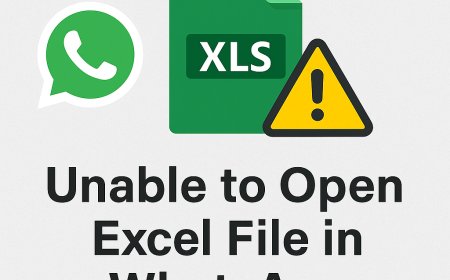The Ideal Age to Teach Kids Financial Literacy in Australia
Teaching kids financial literacy early builds lifelong money skills. Learn age-appropriate tips for Aussie parents and educators to guide children.

Introduction
Gday Aussie parents and educators! Ever wondered when to start teaching kids about money? Understanding financial literacy for kids early on is one of the smartest investments you can make in their future. Teaching children about money from a young age not only empowers them to make smart decisions but also sets them on a path toward lifelong financial confidence and success.
This article explores the best age to start financial education for kids, how to introduce key money concepts at different stages, and why both schools and families play a crucial role in shaping financially capable children.
Why Financial Education for Kids Should Start Early
Starting financial education early lays the foundation for responsible money habits. Research shows that children can begin to understand basic financial concepts as young as three years old, and their money habits are often formed by age seven.
Heres why early education matters:
-
Habit formation: Kids who start learning about saving and budgeting early are more likely to grow into adults who make smart financial decisions.
-
Confidence builder: Teaching kids to manage money boosts their confidence in handling real-life challenges.
-
Better outcomes: Studies suggest that adults who learned about money as children tend to have better credit scores, lower debt, and more savings.
When children learn concepts like budgeting, saving, giving, and distinguishing between needs and wants, they begin to see money as a tool for achieving goals rather than something to be spent impulsively.
Age-Appropriate Financial Education in Australia
Preschool to Primary School (Ages 310)
At this stage, learning should be simple and hands-on:
-
Introduce coins and notes: Let children play with toy cash registers or sort real coins.
-
Piggy bank savings: Show kids how to save for something they want.
-
Shopping role-play: Use pretend stores or real shopping trips to teach value and decision-making.
-
Teach giving: Encourage donating old toys or coins to charity.
Interactive play, visual learning, and involving kids in small financial decisions make a big impact during these early years.
Middle School (Ages 1114)
Now kids are ready for more complex concepts:
-
Allowances and earning: Let them manage their allowance or earn money through chores.
-
Simple budgeting: Teach them to plan their spending and set small savings goals.
-
Introduce banking: Help them open a bank account and explain how it works.
Bring real-life relevance into the conversation by tying money topics to their liveslike planning for a school camp or saving for a new gadget.
High School (Ages 1518)
In high school, teens are ready for serious money matters:
-
Budgeting and expenses: Teach them how to manage part-time job income.
-
Banking and credit: Explain how interest works, how to use debit cards responsibly, and the risks of credit.
-
Investing basics: Introduce concepts like compound interest and risk vs. return.
-
Tertiary education planning: Discuss student loans, scholarships, and budgeting for uni life.
Teenagers can benefit from workshops, apps, and practical projects to reinforce these concepts.
Implementing Financial Literacy at Home
Parents play a pivotal role in teaching kids money skills. Here are some simple ways to build financial literacy at home:
-
Lead by example: Kids watch and learn. Show them how you save, plan, and spend wisely.
-
Involve them in spending decisions: Let them help plan a grocery list within a budget.
-
Create a savings jar system: Divide money into jars for saving, spending, and giving.
-
Celebrate money goals: Recognise when they save enough for a toy or gifttheyll feel accomplished.
Using age-appropriate tools like books, educational games, and budgeting apps makes learning about money fun and memorable.
Teaching Financial Literacy in Aussie Schools
Incorporating financial education into Australian school curriculums can have lasting benefits. Programs like ASICs MoneySmart for Schools offer excellent resources for teachers to guide students in practical financial learning.
Core school topics can include:
-
Budgeting basics
-
Saving strategies
-
Understanding wants vs. needs
-
Exploring credit and debt
-
Long-term planning like superannuation and investing
Studies show that students who receive structured financial education are more likely to avoid debt, save regularly, and make smart money choices later in life.
Combining School and Home: A Winning Strategy
A joint effort between schools and families yields the best results. While schools can offer structured lessons, parents bring context and everyday money experiences to the table.
Ways to align:
-
Reinforce school lessons at home
-
Discuss money goals together
-
Use apps and tools to practice budgeting
When kids hear consistent financial messages from home and school, theyre more likely to internalise and apply them.
Empowering Aussie Kids for Financial Independence
Financial education for kids sets them up for life. It boosts confidence, teaches responsibility, and helps them make informed choices as they grow. Whether youre a teacher, parent, or caregiver, starting early and building on lessons over time can make a big difference.
By gradually introducing financial literacy from preschool through high school, we ensure Australian children become capable, confident money managers. With the right tools and guidance, theyll be ready to take charge of their financial futures.
FAQs
1. When should kids start learning financial literacy?
As early as preschoolsimple lessons like saving coins and learning to make small spending decisions.
2. What are the key topics for younger kids?
Basic concepts like saving, giving, needs vs. wants, and recognising money.
3. How can I make money lessons fun at home?
Use role-play, games, savings jars, and involve kids in shopping and budgeting.
4. Should financial literacy be taught in schools?
Yes! School-based programs ensure all students gain essential money skills.
5. What resources can help teach kids about money?
Books, apps, educational games, and tools like MoneySmart or savings trackers.

































